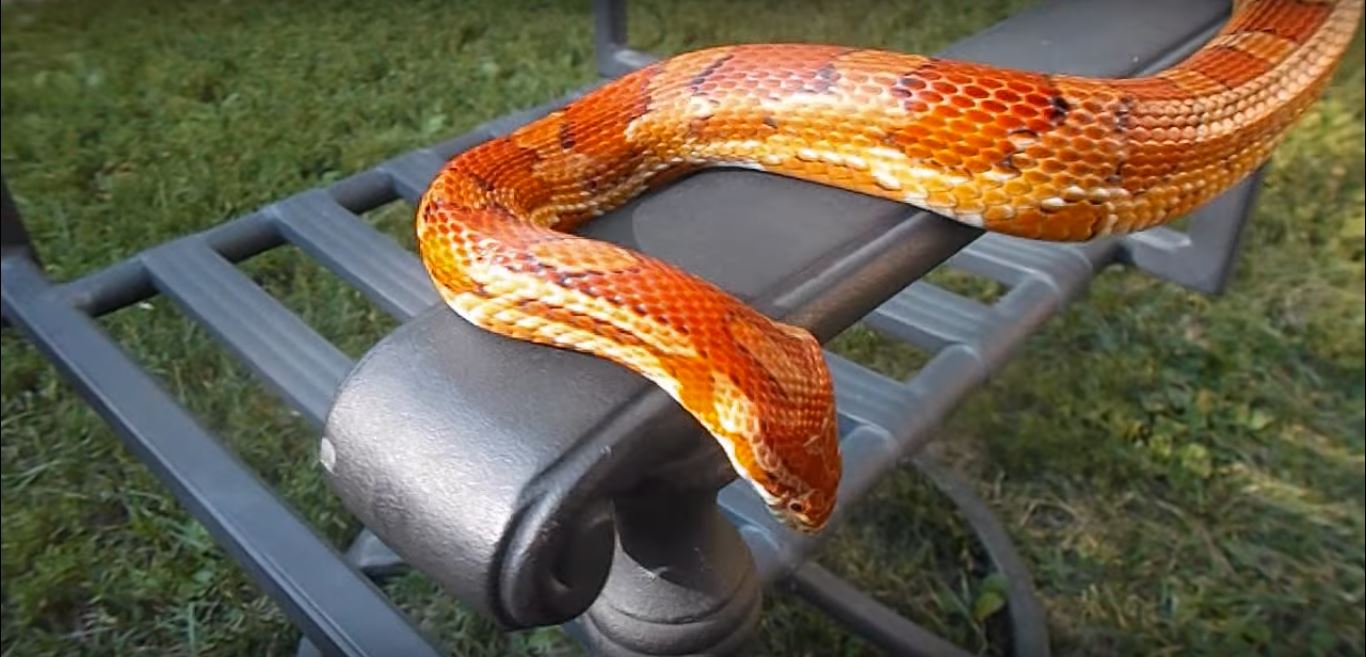The Corn Snake
The Columbus corn snake is often regarded as a native of North America. It is a rat snake family that
normally constricts its prey before feasting on them.

Appearance
The Columbus corn snake is normally slender and its body can extend between 24 and 72 inches in length,
The snake often appear in orange or brown-yellow colour alongside some large black edged with red
blotches. The snake has no visible abrasion or cuts on its skin, and possesses some strong, alert
eyes it uses to monitor the movement of its prey. There are alternating rows of black and white
colours located on the belly of the Ohio snake.
Biology
The breeding period of the Corn snake is between March and May, and the snake is normally Oviparous
in nature, and can lay between 10 and 30 eggs between May and July. The adult female lay eggs in places
with sufficient humidity and heat to incubate the eggs .
Life cycle
The gestation period of the Ohio Corn snake is between 60 and 65 days while the newly born snakes mature between
18 and 36 months. At hatchling, newly born Columbus snakes can reach up to 18 inches in length. The normal lifecycle
of the Corn snake is between 18 and 54 months.
Habitat
Ohio corn snakes are mostly found in the Eastern region of the United States, including New Jersey and Florida.
They are also widely distributed in the Western part, including Louisiana and Kentucky. The Columbus snakes prefer to
live in wooded grooves, as well as woodlots, meadowlands, barns, hillsides, and abandoned
buildings.
Diet
Corn snake is predominantly found in the wild and the snake does not feed every day, but every few days.
While the young ones will feed on lizards and frogs, the older adults prefer to feed on large prey such as
mice, rat, bats and birds. First of all the Columbus corn snake will bite the prey to weaken it and then have a firm
grip before wrapping its body in one or two coils to constrict the animal. Te snake is capable of squeezing
the prey tightly before eating it.
Behaviour
Corn snake is known to be “Diurnal” in nature, it can climb the bark and braches of trees or even enter abandoned
buildings in search of prey. The animal is quite secretive in nature, and prefers to stay underground while prowling
through burrows created by Columbus rodents. The Ohio snake can hide behind loose barks or under rocks, woods, and debris ,
especially during the day.
Visit our Columbus wildlife control home page to learn more about us.

